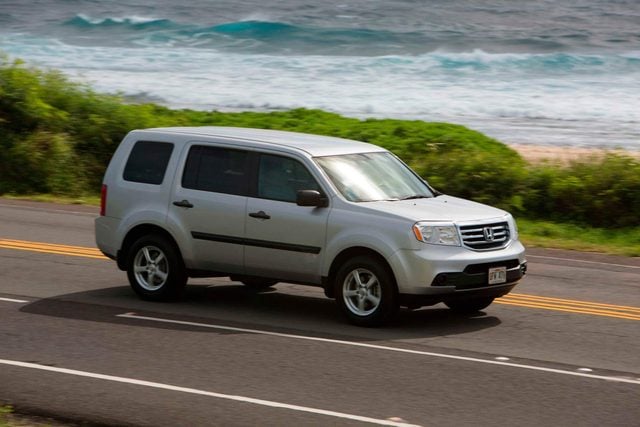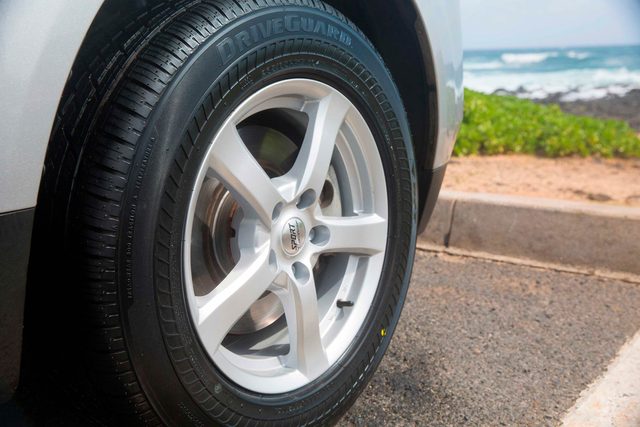The Most Important Car Safety Feature Is Not What You Think
Updated: Jun. 24, 2021
A car expert explains why the most important part of your car is the part we rarely think about.

People in the market for new cars are—and should be—picky. The style, fuel economy, and just the feel of the ride can be game-changers when it comes to making the pivotal vehicle purchase. It also helps to remember these 34 car-buying tips that dealers won’t tell you.
Safety features arguably carry the most importance for buyers, especially ones whose families will be in the back seats. With near-constant technological innovations being debuted, consumers can choose from more options than ever: forward-collision warnings, pedestrian detection, cameras that help you back up without passengers shouting, “You’re good! Keep going!” But the most valuable safety feature is one that’s been on your car this whole time: your tires.
Surprised? That’s not surprising. “Most people don’t know much about tires,” says Chris Welty, a consumer education specialist for Bridgestone Tires. “They don’t think about tires until it’s time to need tires. Then, it’s a very important thing.”
Think about it. We drive rain or shine, in blistering heat or in the middle of winter, making quick stops and sharp turns without even thinking about it. Through all of that, we assume cars will just run like they’re supposed to, but the tires are the things doing all the work. They keep your car from sliding in the rain and endure extreme hot and cold temperatures. Their tread is what allows you to stop quickly when you see pedestrians or need to avoid an imminent collision. (Also make sure you master these tips for driving in scary situations.) They even control the sound inside your car and how smoothly it rides; just switching out your tires can turn a noisy, bumpy car into a quiet, smooth one.
“The average footprint of one tire realistically, depending on the size of your foot, it could be the size of your foot,” Welty says. “(Humans) have two feet and we’re this size. Our car has just double of that, and it weighs anywhere from 3,000-4,000 pounds. So we’re asking that tire to do a tremendous amount.”

If you drive around with one or multiple flat tires, you risk more than just the possibility of a blowout. Driving on underinflated tires causes a drag, a force that works against your car to slow it down, and that negatively impacts your gas mileage. “Doing something as simple as checking tire pressure once a month and making sure that you have the proper inflation pressure can make a big difference in the safety, the wear and the fuel economy in your tires,” says Rachel Withers, communications leader for Bridgestone.
So how can you protect your tires so your whole car runs smoothly? Practice these car maintenance tips that’ll extend the life of your car (and tires). Another option is swapping your current tires for Bridgestone’s DriveGuard tires, which can travel up to 50 miles at a maximum speed of 50 miles per hour after a puncture. What matters is recognizing what’s actually keeping you safe on the road. As Welty says, “It depends on the tire, not the car.”